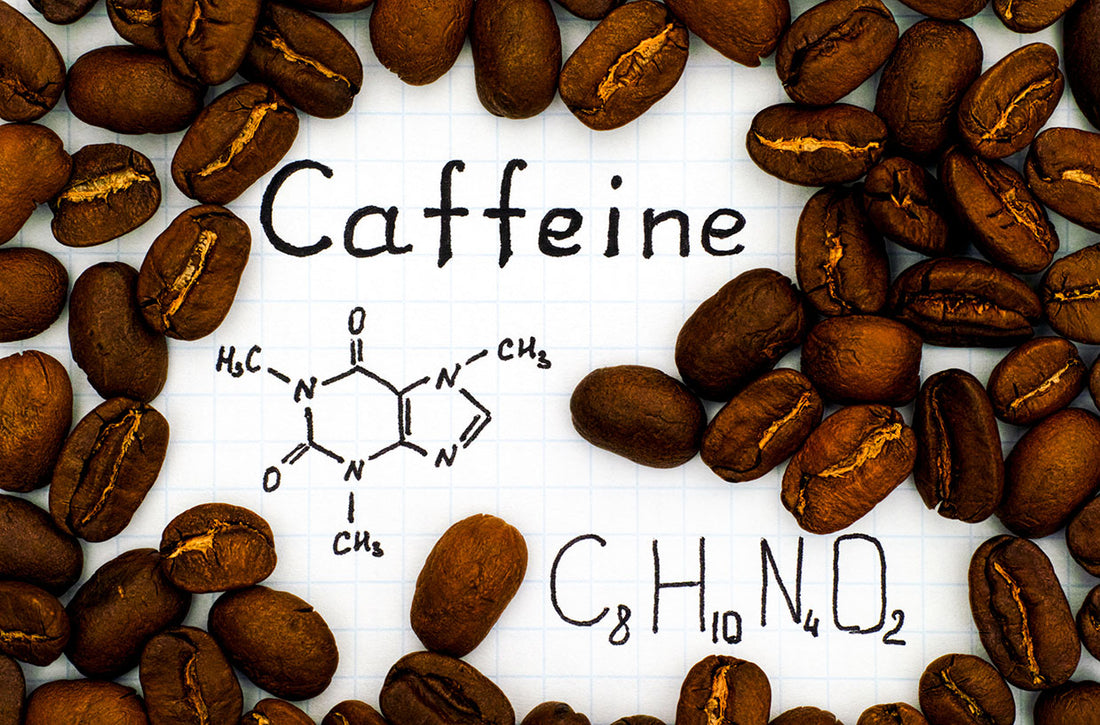
Does Stronger Tasting Coffee Have More Caffeine in It?
Share
Coffee drinkers frequently assume that a strong, intense flavor implies a greater caffeine kick. This belief permeates coffee culture, sparking debate among enthusiasts and casual consumers alike.
The question emerges - does a bolder morning brew truly provide more caffeine, or is this merely a ubiquitous myth? This exploration aims to unravel the nuances between coffee's rich spectrum of flavors and its caffeine content.
It also examines the traditional Costa Rican brewing method of the chorreador and its role in this flavor-caffeine interplay.
Bean Type Dictates Flavor, Not Caffeine
The foundation of any cup of coffee lies in the beans. Arabica and Robusta, the two dominant coffee species, offer vastly different flavor profiles and caffeine levels.
Smooth and slightly acidic Arabica contrasts with the harsher and more bitter Robusta. Interestingly, Robusta beans contain nearly twice the concentration of caffeine compared to Arabica.
Brewing these beans via a chorreador - allowing hot water to slowly drip through the grounds - highlights their innate flavor differences. The gentle three-minute chorreador extraction draws out sweetness and fruitiness from Arabica beans, while also emphasizing bitterness in Robusta.
Thus, right from the start, bean variety dictates both taste and caffeine, not brewing procedure. A Robusta-based chorreador coffee will indeed provide a greater stimulant kick, but that stems from the bean itself.
Roast Level Adds Flavor Dimension, Not Caffeine
Roasting awakens aromatic compounds within the green coffee beans, transforming them to the deep brown hue of brewable beans. Light, medium, and dark roasts each contribute unique characteristics, from bright acidity to bittersweet smokiness.
Many assume dark roasts contain higher caffeine levels. Roast degree does significantly influence flavor, but caffeine remains unaffected. In fact, darker roasts may have slightly less caffeine due to extended heating.
Brewing via chorreador allows for excellent development of roast-induced flavors. Its gradual water dispersion gently extracts nuanced tasting notes specific to the roast style, all without altering inherent caffeine content.
Once again, the flavors translate from bean and roast diversity, not caffeine concentration.
Brewing Methods Impact Extraction, Not Caffeine Content
The final pillar affecting coffee's flavor and perceived caffeine boost lies in the brewing technique itself. Widely held assumptions, like espresso containing more caffeine than drip coffee, crumble under scrutiny.
Despite its thick, concentrated texture, espresso comprises less actual caffeine per cup than drip methods.This results from the fast 30 second brewing that defines espresso, limiting caffeine extraction from the grounds compared to slower drip methods.
Enter again the classic chorreador, which provides an intriguing case study. Its cloth filter and three-minute hot water drip creates a gentle, full-bodied extraction that simply enhances inherent flavors of bean and roast.
The technique does not substantially alter caffeine content itself. So while a chorreador-brewed dark roast coffee may taste quite robust, its caffeine level ultimately depends on the beans used rather than the brewing process.
The Great Coffee Strength versus Caffeine Myth
The deeply rooted idea that a “stronger” cup of coffee guarantees a bigger stimulant rush is largely a myth. When describing a coffee as robust or powerful, it typically refers to flavor rather than caffeine content. The tongue perceives this strength, but the caffeine molecule itself remains unchanged.
Factors like roast style, grind coarseness, brew duration and hot water precision all influence the taste and mouthfeel. The chorreador exemplifies how easy-drinking drip coffee can highlight striking flavor profiles, while caffeine fluxuates dependant on the bean itself.
Caffeine Content Relies on Beans, Not Taste Buds
While the chorreador and other brew methods can enhance, mute or transform flavors, caffeine levels stay consistent barring changes to the beans themselves. The caffeine molecule already exists within the raw, green coffee beans.
Roasting and brewing will not increase or decrease actual caffeine content substantially. For consumers to achieve that extra caffeine kick, the only factor that truly matters is choosing beans naturally higher in stimulants, such as Robusta.
Additionally, using finely ground beans and ensuring proper water temperature and brew durations can help fully extract existing caffeine from the grounds. So while the chorreador may strain a flavorsome brew, only the beans dictate caffeine strength.
Health Impacts Require Understanding Caffeine Content
Caffeine intake plays a vital role in daily routines for millions who depend on coffee’s stimulation. In moderation, caffeine can provide functional energy benefits. But excessive overconsumption may risk adverse side effects in susceptible people. The method for providing that caffeine, whether via chorreador or otherwise, does not inherently make coffee “healthier” or “less healthy.”
Only by fully understanding their caffeine intake can consumers make responsible, informed choices for themselves. If opting for higher-caffeine Robusta beans in a chorreador brew, it becomes especially important to control serving sizes to avoid unwanted overstimulation.
The Market of Coffee Culture Perpetuates Myths
Coffee manufacturers frequently advertise products as “extra caffeine” or “super strength” - messaging that typically references flavor not caffeine itself.
This sets unrealistic expectations for consumers. Compounding confusion, the cultures and rituals built around coffee drinking often inadvertently spread misinformation through public perception and word-of-mouth.
However, the chorreador, a traditional constant in the Costa Rican lifestyle, delivers coffee clarity. It shows that behind trendy modern equipment and flashy coffeehouse menus, the genuine 12th-century method still focusing on core pillars: quality beans, water, and time.
The Chorreador: A Reminder to Savor Flavor and Caffeine Consciously
The takeaway for all coffee enthusiasts, adventurous brew explorers and casual drinkers alike rests in this: the rich spectrum of flavors you may experience do not directly correlate with caffeine content.
Appreciate that coffee’s taste depends on delicate variables: origin, processing, roast degree, grind profile, water chemistry and time.
Yet its caffeine relies principally on the beans. So, for those that seek flavor revelations through techniques like the steadfast chorreador, also be conscious that stimulation still comes directly from bean caffeine. Savor each sip, but do so responsibly.
